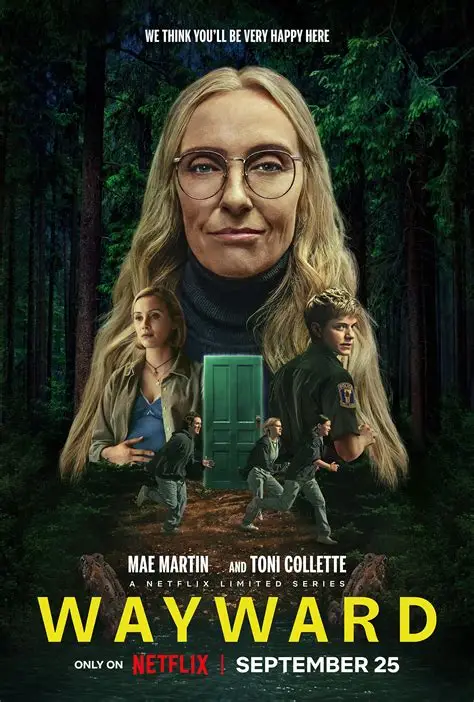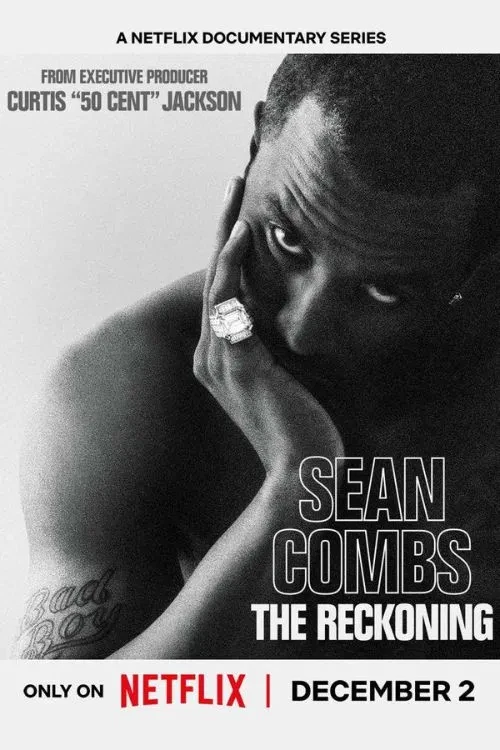Wayward
NZ release: 25 September 2025
Drug use, sex scenes and nudity Rated on: 10 October 2025

What’s it about?
In a pleasant countryside town in Vermont, sinister activity grows as a dangerous and cultlike woman founds a school for troubled teens.
The facts
- Created by Mae Martin
- Starring Sarah Gadon, Mae Martin, Alyvia Alyn Lind, and Toni Collette
- English language
- 50 minutes per episode, on average
Why did it get this rating?
This series was self-rated by Netflix. You can find out more about self-rating by streaming providers here.
Violence
In one scene, a man beats another man’s face with a small rock after he tried to strangle him. The scene ends before we see the impact, implying he smashed his head with the rock and killed him violently.
A character climbs over a wire fence whilst fleeing police. We hear flesh tearing and see blood on his chest, but the scene is dark so we don’t see a lot of detail.
A police officer accidentally stabs a distressed teen. The character bleeds out on the floor. There is lots of blood, to the point where we see it dripping down to the basement, but we do not see the stab wound directly.
Another scene involves an authority figure being stabbed repeatedly with a hypodermic needle full of toxins.
Content that may disturb
This show follows an institution which brainwashes and drugs teenage characters. In one scene, a girl sneaks into a secure area and witnesses a brainwashing ritual with a girl floating in a pool whilst a woman stands over her enchanting words.
Children are kidnapped in the middle of the night, with bags placed over their heads.
A character has a condition requiring her to wear mittens to bed to prevent her from scratching her thighs and causing them to bleed.
Low-level suicide reference
There is a low-level word use when a police officer says, “it was a suicide right?”, but there was no suicide.
Drug use
Drugs play a central part in the narrative of the show, with teens depicted smoking marijuana, consuming psychedelic mushrooms, and rubbing white powder from small plastic bags into their gums. Teens are also shown possessing “coke.”
Teens are subdued via the use of toxin syringes which produce a psychedelic effect. In episode 5, a group of teens rebel, stealing numerous syringes and using them to stab and subdue the guards in an attempt to escape the facility.
Sex scenes and nudity
Characters are seen in their underwear, partially nude. There are also scenes where characters kiss passionately and fall into bed together.
We see a wife take off her husband’s pants and masturbate him. Though we do not see this directly, it is heavily implied through facial expressions and moaning.
During episode 8, a baby is born. We see the umbilical cord being cut and a room full of men and women take their tops off, revealing their bare chests and breasts as part of a “tradition.” This is not sexual but contains graphic nudity.
Offensive language
This series contains frequent uses of offensive language, such as “f*ck,” “sh*t,” and “damn.” and crude language like “swing their d*cks around.”
When content stays with you:
We all have our boundaries, and it’s completely okay if something you’ve watched is weighing on your mind. If certain content lingers with you, consider having a chat with friends or whānau to debrief about what you’ve just seen. But if you’re still feeling affected, please reach out to any of the following helplines for support.
Further information
Recent featured decisions
Domestic violence, offensive language, sexual violence themes
This docuseries digs into the long-running allegations tied to Sean “Diddy” Combs and the rise of his Bad Boy empire, covering decades of fame, power, and controversy.
Offensive language, sex scenes, sexual references, drug use
Two rival hockey stars at the peak of their careers suddenly catch feelings for each other, throwing a massive curveball into their professional lives and the expectations of the sport.

